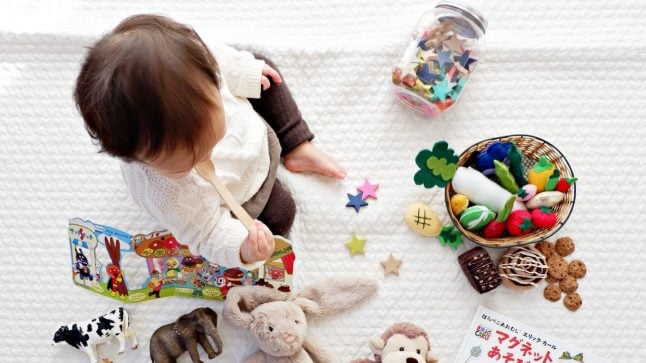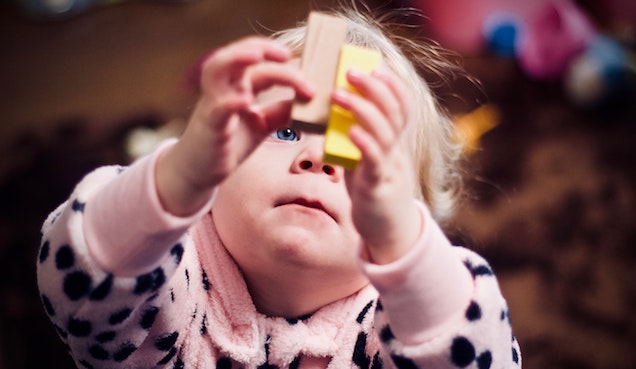Series: Focus on the Child
Noticing Same and Different: The Concept of Comparison with Infants and Toddlers

“More” is often one of children’s first words. Infants attend to differences, though they don’t yet discriminate between “more” as quantity or magnitude/size or intensity of sensation. Toddlers are beginning to differentiate between attributes and develop a spectrum of preferences. These are all examples of the origins of the precursor math concept of Comparison, that is noticing sameness and difference.
More specifically, comparison involves identifying how the attributes of one set are the same and different from the attributes of another set. The comparison allows us to create increasingly precise categories. For example, it would take no time to see the unique set of attributes that distinguish your family’s charming Jack Russell terrier from a bunch of other dogs.
Comparison is noticing sameness & difference.
- Comparison depends on recognizing attributes.
- Recognizing attributes makes it possible to notice sameness and difference.
- Noticing sameness and difference allows for matching, sorting, & problem-solving with increasing precision.
In the first three years, infants and toddlers are in what we call the precursor stage—their thinking is still developing. Yet, all children seek to make sense of their world and solve the many math all around us problem situations involving specifically mathematical attributes:
Quantity (Which set has more?) Even before children learn to count, they are very good at figuring out more and less, using all their senses. Comparison is especially important for number learning since the number “three,” for example, is held by a set of three objects. So comparing 3 toy cars with 3 toy trains draws attention to the “three-ness” of the sets—the equivalency is what makes these sets the same.
Magnitude/Size (Which set is bigger? Will it fit?) Little ones, like many adults, often don’t distinguish between number and size. For example, two bigger pieces of watermelon can be “more” than three smaller pieces. Filling, packing, and stacking are fun ways for children to compare size and capacity.
Spatial-Temporal Relationships (Where is it? How long do I have to wait?) Even at birth, infants can compare how close or how far away something or someone is and when they can expect important others to attend to their need for food, toileting, rest, and of course, for play!
Sequence & Regularity (What comes next?) In their second and third years, many children can line things up from biggest to smallest, identify which sounds are the loudest or quietest, or what they expect will happen next in a familiar routine like bath time.
Take a look at this caregiver playing with a couple of toddlers. She takes advantage of the natural opportunity to compare the sizes of balls and cardboard tubes that the children want to explore.
3 questions to think about:
- In what ways does the teacher highlight comparisons of size?
- How does she involve the children in problem solving?
- How do the teacher and child communicate–even though the child doesn’t say any words?
Starting in infancy, and throughout childhood, understanding of how comparison allows us to solve problems depends on important others who closely attend and intentionally respond by using words, actions, and gestures to make comments and connections, ask and answer questions, read books, and offer many opportunities to play with thinking about sameness and difference.
Conversational Math Expressing COMPARISON:
Examples of Comparative and Superlative Adjectives or Expressions
- Quantity: more, fewer, less, equal to, as well as ordinal numbers; use of numbers to quantify units of measurement or to precisely indicate movement and direction
- Magnitude: more, bigger, greater, smaller, including more precise identification of a dimension in various dimensions such as longer/est, taller/est, wider/est, deeper/est
- Time: sooner, later, next day, week, month, after, before
- Location of items or others in reference to another item or other uses comparison; adjectives will be in the comparative case such as closer, further, deeper down, on top of, behind
- Sensory perceptions: hotter/est, colder/est, softer/est, smellier/iest, sweeter/est
Photos by Yuri Shirota and Jelleke Vanooteghem
